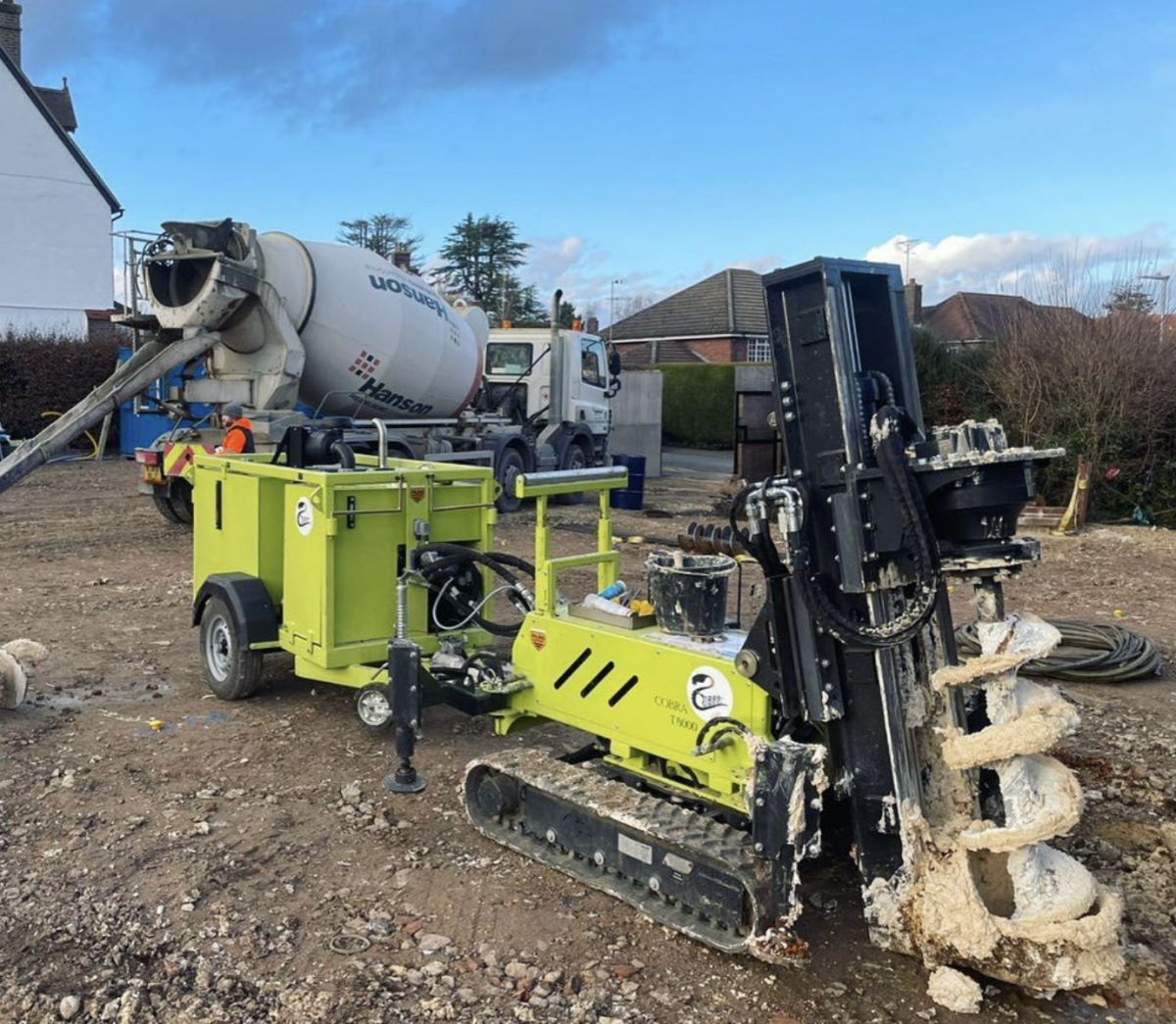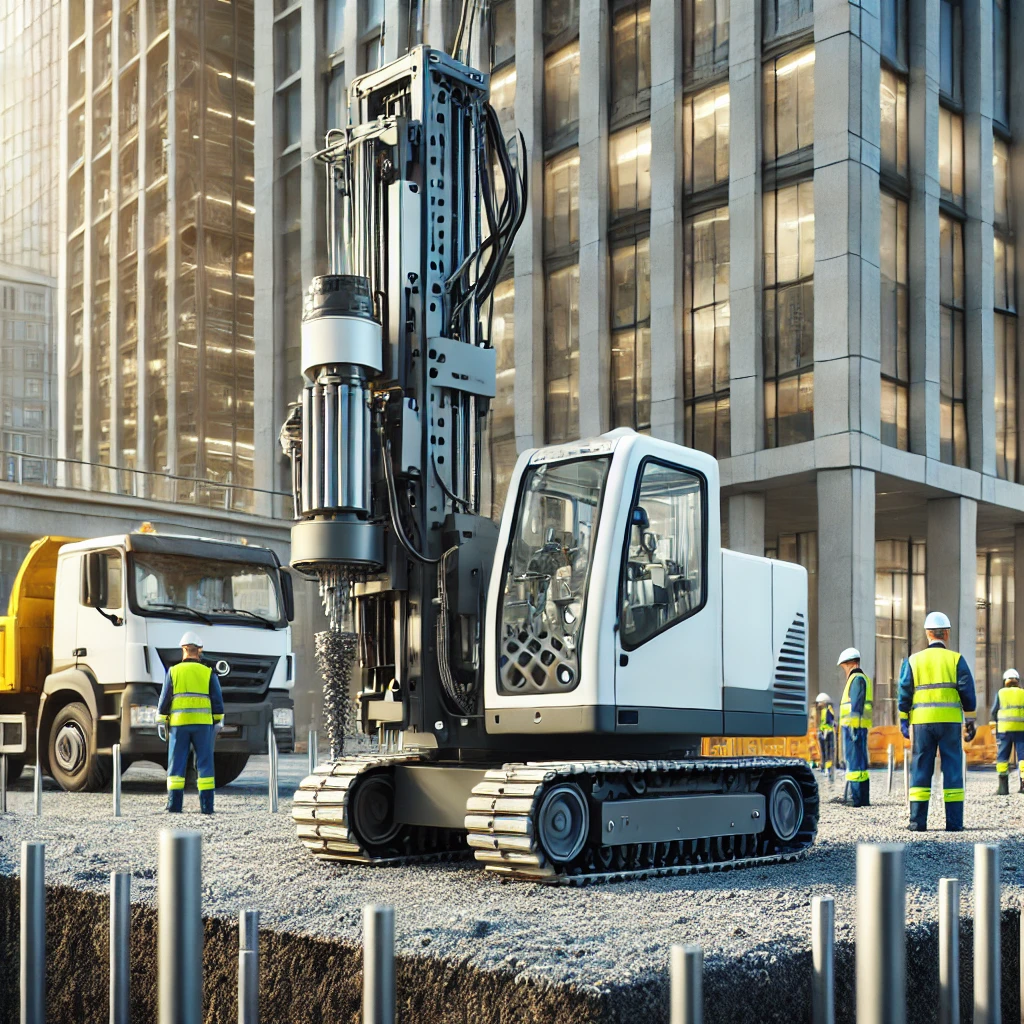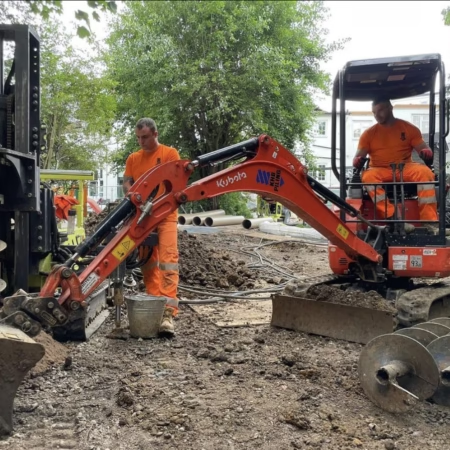When it comes to constructing large-scale commercial properties in London, ensuring a strong foundation is vital to the success and longevity of the project. At KHB Piling LTD, we specialise in providing expert piling services for commercial developments throughout London. Whether you’re constructing an office building, shopping centre, or multi-story car park, the strength of your foundation determines the overall stability and safety of the structure.
Why Proper Foundations Matter for Commercial Projects in London
Commercial buildings in London present unique challenges due to the city’s dense urban environment, varied soil conditions, and strict building regulations. Without a solid foundation, your commercial property could face structural problems such as settlement, cracking, and subsidence, all of which can be costly to repair. By choosing the right piling solution, you’re investing in a secure and stable foundation that will support the building’s longevity.
Challenges in Commercial Construction and Why Piling is Essential
1. Varied Ground Conditions in London
London’s geology is diverse, with a combination of clay, gravel, and sand that can create challenging conditions for building foundations. These conditions can change drastically even within a small geographical area. Piling helps overcome these challenges by transferring the weight of the building to deeper, more stable ground layers, providing a reliable foundation for your commercial development.
2. Limited Space and Access
Many commercial construction sites in London are located in areas with limited space for traditional foundation methods. Excavating large areas or using heavy machinery may not always be possible. Piling offers a more compact solution, with minimal disruption to surrounding properties and streets. Our modern piling rigs are designed to work efficiently even in confined spaces, making them ideal for urban commercial sites.
3. Regulatory Compliance and Safety
Commercial construction projects must comply with stringent UK building regulations, especially concerning safety. At KHB Piling LTD, we ensure all our piling services adhere to the latest safety standards and regulations. Our team is fully trained and equipped to handle complex projects while maintaining the highest levels of safety and compliance.
Types of Piling for Commercial Construction Projects
At KHB Piling LTD, we offer a range of piling services tailored to the specific needs of commercial construction projects. Our expert team will assess your site’s soil conditions and recommend the most suitable method for your project.
1. Continuous Flight Auger (CFA) Piling
CFA piling is one of the most commonly used methods for large commercial projects due to its ability to create strong foundations quickly. It involves drilling a hollow stem auger into the ground and filling it with concrete to form a reinforced pile. This method is ideal for large buildings or areas with unstable ground conditions.
- Best for: High-rise buildings, Multi-story developments, Projects with high load-bearing requirements
2. Bored Piling
Bored piling is another reliable method for constructing deep foundations, typically used in large commercial projects. It involves drilling large-diameter holes into the ground and filling them with reinforced concrete. This technique ensures a solid and deep foundation, capable of supporting heavy structures.
- Best for: Office buildings, Mixed-use developments, Underground parking facilities
3. Mini Piling
For sites with limited space, mini piling is a cost-effective and space-saving solution. It uses smaller piles that are driven deep into the ground, making it ideal for urban construction projects where space is restricted.
- Best for: Small commercial sites, Renovation projects, Areas with restricted access
4. Screw Piling
Screw piling is an eco-friendly foundation method that uses steel piles with helical plates that are screwed into the ground. It’s a fast and efficient solution, ideal for projects where speed and minimal environmental impact are crucial.
- Best for: Temporary structures, Sustainable projects, Quick-turnaround developments
The Benefits of Piling for Commercial Construction
- Stronger and More Stable Foundations: Piling transfers the structural load to deeper, more stable ground layers, reducing the risk of movement and subsidence over time.
- Reduced Disruption: Piling requires minimal excavation and reduces noise and vibration, making it ideal for construction in densely populated areas.
- Cost-Effective: Piling is often more cost-effective than traditional foundation methods, especially for large or complex sites.
- Faster Construction: Piling can be installed quickly, reducing the overall construction time and allowing your project to progress on schedule.
When Do You Need Piling for a Commercial Project?
- When the soil is unstable or contains multiple layers of material that require deeper foundations.
- If the building is large or has a heavy structure that demands a strong and durable foundation.
- For projects in restricted spaces where traditional excavation methods are not feasible.
- When you’re constructing on reclaimed land or areas with high water tables.
Why Choose KHB Piling LTD for Your Commercial Construction Project?
At KHB Piling LTD, we are committed to providing the highest quality piling services for commercial projects in London. With years of experience and a team of skilled engineers, we deliver reliable, cost-effective, and efficient foundation solutions.
Our Expertise Includes:
- Expert soil analysis and site assessment
- Precision piling installation using advanced piling rigs
- Full compliance with UK building regulations
- Competitive pricing with no hidden costs
Contact KHB Piling LTD for Your Commercial Construction Project
Whether you’re planning a high-rise office building or a multi-story car park, KHB Piling LTD provides expert piling solutions to ensure your commercial construction project is built on a solid foundation.
📞 Call us today: +44 7821 836407
💻 Contact Us for a free consultation and no-obligation quote.
Conclusion
Choosing the right piling contractor for your commercial construction project is critical to ensuring the stability and longevity of your building. With years of experience, a wide range of piling methods, and a commitment to safety and quality, KHB Piling LTD is the trusted choice for piling services in London.

My name is Kamil, and I specialise in piling services in London. I am dedicated to advancing KHB Piling LTD, a trusted contractor delivering high-quality foundation solutions for both residential and commercial projects. With the expertise and commitment of our team, we provide reliable piling services, including mini piling and CFA piling, tailored to meet the unique requirements of each client.






